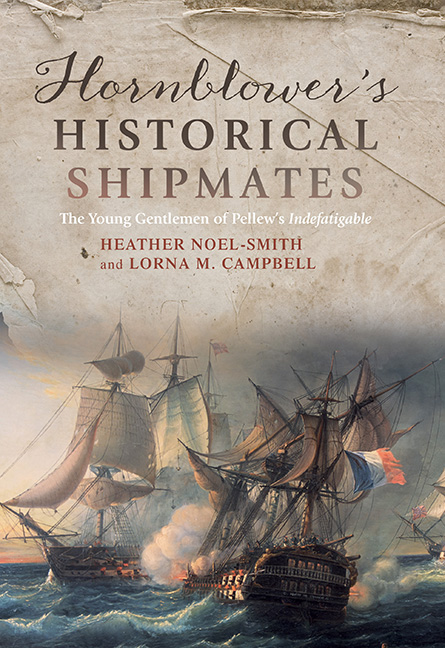Book contents
- Frontmatter
- Dedication
- Contents
- List of Illustrations
- Preface and Acknowledgements
- List of Abbreviations
- Introduction
- 1 Edward Pellew – Partisan and Patriarch
- 2 ‘My Dear Indefatigable’
- 3 The Fortunate Few
- 4 ‘Never Was Such an Action Known’
- 5 The Nature of Patronage
- 6 ‘Boys Grown to Manhood’
- 7 Diversity and Responsibility
- 8 Friends, Family and the Falmouth Connection
- 9 ‘Faithful and Attached Companions’
- 10 ‘No State in Life More Honourable’
- Appendix The Spencer–Pellew Correspondence of February 1799
- Bibliography
- Index
2 - ‘My Dear Indefatigable’
Published online by Cambridge University Press: 28 April 2017
- Frontmatter
- Dedication
- Contents
- List of Illustrations
- Preface and Acknowledgements
- List of Abbreviations
- Introduction
- 1 Edward Pellew – Partisan and Patriarch
- 2 ‘My Dear Indefatigable’
- 3 The Fortunate Few
- 4 ‘Never Was Such an Action Known’
- 5 The Nature of Patronage
- 6 ‘Boys Grown to Manhood’
- 7 Diversity and Responsibility
- 8 Friends, Family and the Falmouth Connection
- 9 ‘Faithful and Attached Companions’
- 10 ‘No State in Life More Honourable’
- Appendix The Spencer–Pellew Correspondence of February 1799
- Bibliography
- Index
Summary
HmsIndefatigable, the ship with which Pellew's name is most closely associated, was built by Master Shipbuilder Henry Adams at Bucklers Hard shipyard on the Beaulieu River in Hampshire in 1781. She was one of five Ardent class 64-gun third-class ships of the line ordered by the Royal Navy over a five-year period from 1777 to 1782. The Ardent class had been designed by Sir Thomas Slade well over a decade earlier and was based on the lines of the French ship Le Fougueux, built at Brest in 1747 and captured and bought into the Royal Navy in 1748. Two Ardent class ships were built in Slade's own lifetime, hms Ardent, in 1761, and hms Raisonnable, in 1765. Although the Raisonnable had a long and successful history, and remained in service until 1810, the Ardent class was already becoming obsolete by the time the Indefatigable was completed and launched in 1784. Sixty-four-gun ships were increasingly regarded as too small to serve in the line of battle, where their place was being taken by larger, heavily armed 74s, and too slow and heavy to take on frigates, despite the fact that the French were building ever larger ships in this class. At a time when some notions of honourable conduct in battle still prevailed, it was regarded as somewhat disreputable for a ship to take on an opponent of a lesser class. The outcome of such an engagement might have been assured, but the victory would hardly have been regarded as gallant. Consequently the Indefatigable was never commissioned as a ship of the line and she remained for ten years at Portsmouth Dockyard, where she had been transferred for completion.
At the outbreak of the Revolutionary War in 1793 concerns were growing that the French possessed a number of large, heavily armed frigates that were superior to anything in the service of the Royal Navy. Some of these frigates, such as Brutus, were old, cut down, or raséed 74-gun ships of the line, and Gardiner has argued that the threat posed by these aged and unstable ships was more imaginary than real. Others such as the Pomone, launched at Rochefort in 1785, and captured by Pellew in the Arethusa in 1794, were frigates of conventional layout but increased size, which carried an armament of twenty-six 24-pound guns.
- Type
- Chapter
- Information
- Hornblower's Historical ShipmatesThe Young Gentlemen of Pellew's <I>Indefatigable</I>, pp. 27 - 45Publisher: Boydell & BrewerPrint publication year: 2016



